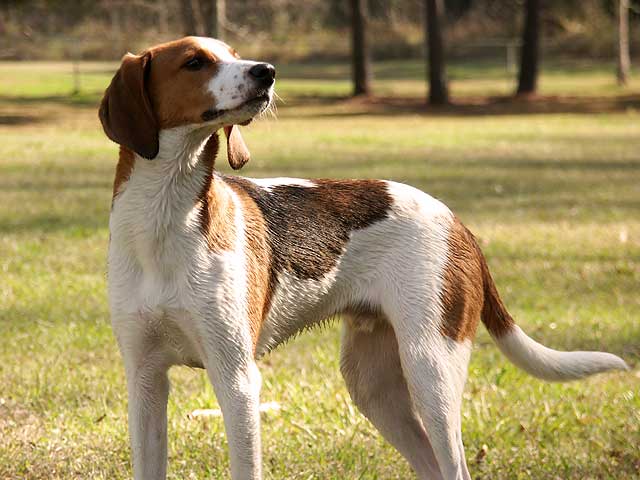Introducing the Treeing Walker Coonhound, nicknamed “The People’s Choice.” This gentle companion is out to capture your heart with its large brown eyes, floppy ears and fastidious work ethic.
Quick facts
- Height: 20-27 inches
- Weight: 50-70 pounds
- Life Expectancy: 12-13 years
- Talents: Hunting, treeing
- Ancestry: English Foxhound, American Foxhound
A smart, loyal companion with the sensitive soul of a poet, the Treeing Walker Coonhound is quickly gaining popularity with dog owners around the country — just don’t call it beagle! While it has the telltale coloring of the popular breed, the Treeing Walker Coonhound is a dog in its own league. This breed is an expert hunter who’s wonderful with children and families, but they’re also high-energy and require a lot of exercise. If you work long hours or find yourself away from home frequently, it might be a good idea to find a dog walker to help take the edge off all their curious energy while you’re gone.
Think the Treeing Walker Coonhound might be the right fit for you? Read on to learn more about this loving companion.
What is a Treeing Walker Coonhound?
Descended from English Foxhounds (or English Coonhounds, as they were also known) brought to colonial America, this breed evolved into a driven, speedy, and uncannily good game hunter. Wondering how it earned its unique name? “Walker” is a hat tip to a Kentuckian named John W. Walker, who with the help of George Washington Maupin, developed the breed in the 19th century. In the 1800s, the resulting Walker Hound — which was used to hunt raccoons — crossed with the Tennessee Lead and produced the breed as it’s known today. The “Treeing” part of its name refers to the dog’s relentless pursuit for the hunter’s prey, or quarry, which often results in the hound staking out a tree and tenaciously barking at its base until the hunter knows that its target had scampered up its trunk.
The Treeing Walker Coonhound was officially recognized by the American Kennel Club (AKC) in January 2012 as part of the Hound Group, making it the organization’s 174th recognized breed.
What does a Treeing Walker Coonhound look like?
Just one look into its big, soulful brown eyes and it’s easy to see why people quickly fall in love with this pup. Long, muscular legs power this pup through the task for which it was bred: hunting down and treeing raccoons in the wild. Its smooth, shiny coat comes in three standard colors: black, white, and tri-colored (white, black, and tan), which is why it’s often confused for a large beagle. The breed stands anywhere between 20 to 27 inches tall at the shoulder and typically weighs 45 to 80 pounds.
Are Treeing Walker Coonhounds good with kids?
After a long day on the hunt, this pup loves nothing more than to cuddle up with its family and bask in the warm glow of the fire. Affectionate and loyal, Treeing Walker Coonhounds are wonderful with children and make a wonderful family pet. If you own other small, furry pets (think: cats, hamsters, and rabbits), this may not be the right fit, as these hounds are likely to view your other animals as prey. Speaking of which, this is a hunter through and through! They have a strong desire to track, and if you don’t help them fulfill that need, they’ll go off on their own to see what they can find. Long walks and daily runs on a leash (in a safe, enclosed area) are highly recommended.
Generally, you’ll find that this breed is happy, energetic, and incredibly intelligent. They’re independent thinkers, which can make training a bit challenging. But their sensitive nature makes them more receptive to training and eager to learn than other breeds in the hound group.
How long does a Treeing Walker Coonhound live?
A hardy and healthy breed, Treeing Walker Coonhounds typically have a life expectancy of 10-13 years. Hip dysplasia and polyradiculoneuritis — a creeping paralysis due to acute inflammation of the nerves — can be a concern, as can ticks. Be sure to check the folds of their floppy ears for any critters, debris, or wax buildup.
How do you groom a Treeing Walker Coonhound?
With this breed, grooming is a low-maintenance deal. Their short coat repels dirt and mud, which means they usually only need to be brushed and wiped down weekly to remove debris and dead hair. Ears should also be checked weekly for wax, mites, and ticks. Your veterinarian can recommend a good ear wash. Nails should be trimmed on a monthly basis, though. Generally, taking care of this breed is a delight. Treeing Walkers regard their grooming sessions as an opportunity to bond with their family.


